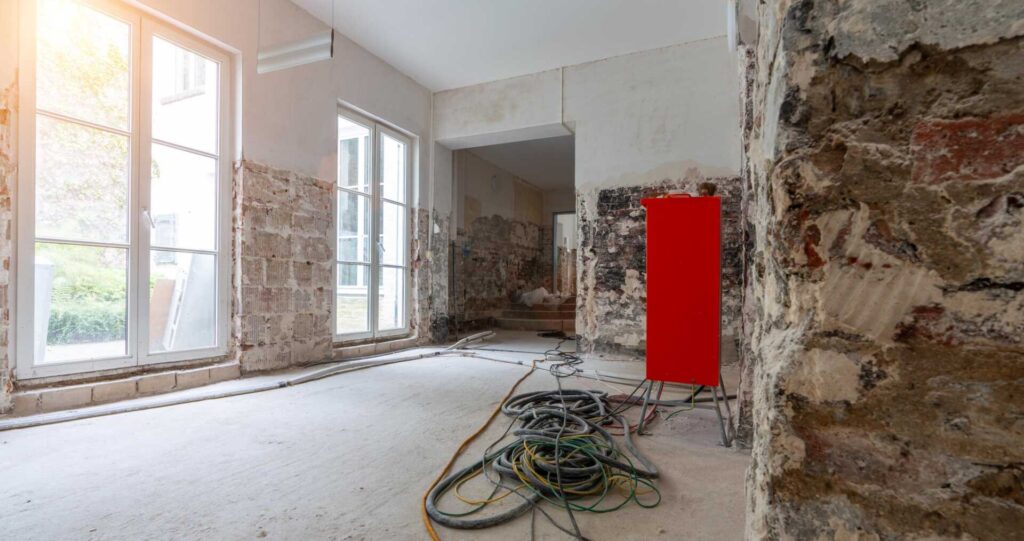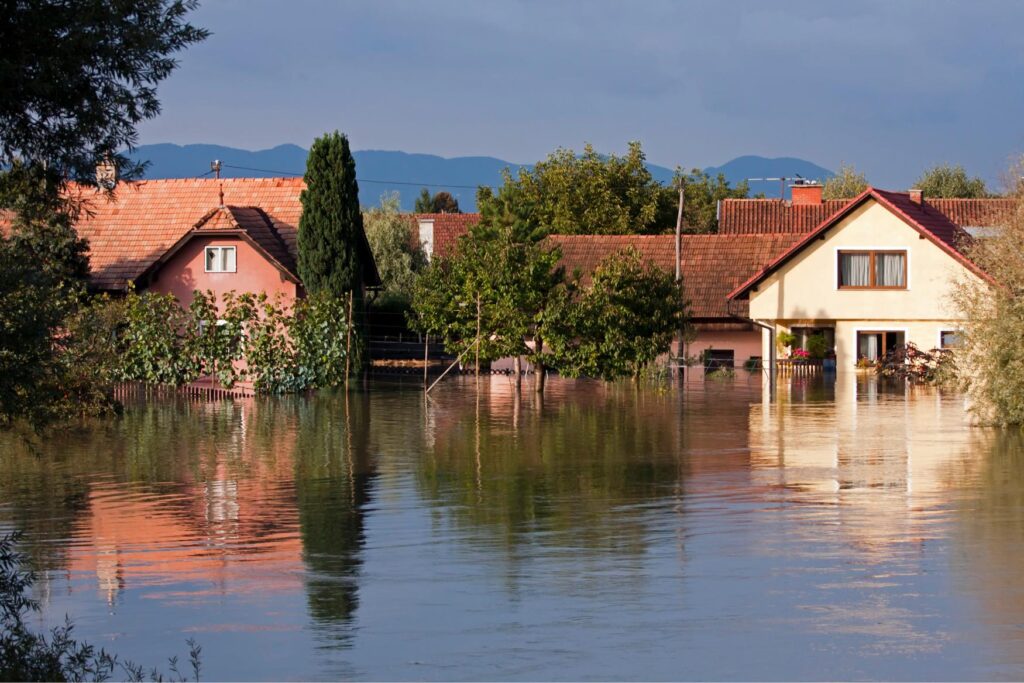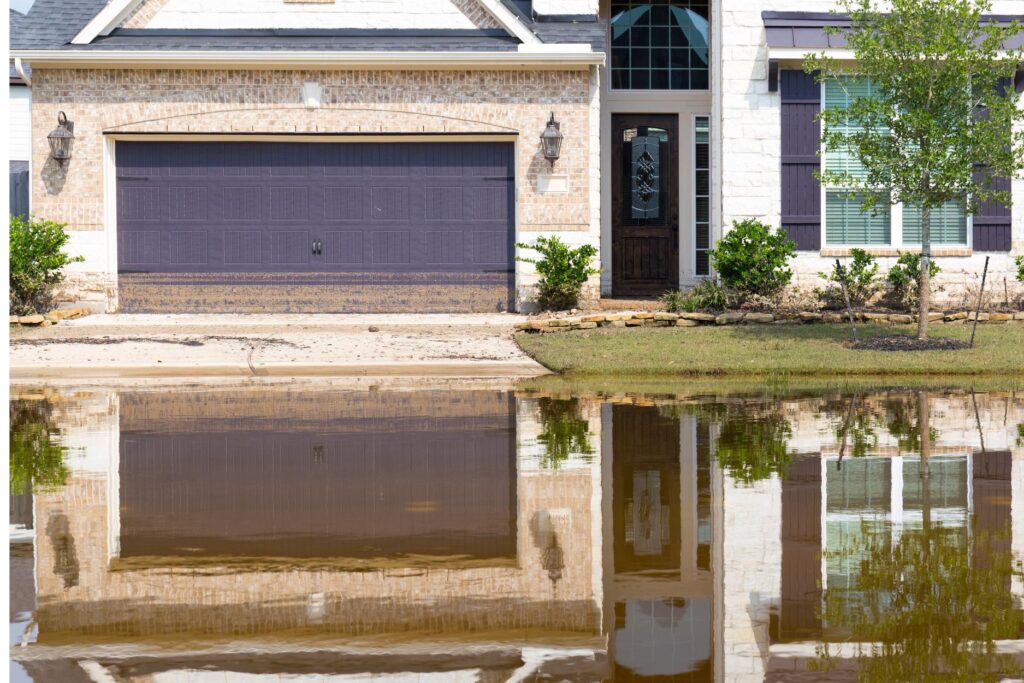Contents
Water damage on a home’s foundation can silently wreak havoc beneath the surface, affecting the very core of your dwelling. The gradual erosion caused by water seepage can lead to a domino effect of structural issues, potentially putting your home at risk. From unseen cracks to compromised support beams, the implications of water damage on the foundation are vast and consequential. Understanding these implications is essential in safeguarding your investment and ensuring the longevity of your home.
Key Takeaways
- Water damage causes foundation cracks, compromising structural integrity.
- Mold growth from water damage weakens foundations.
- Soil erosion from water exacerbates foundation instability.
- Regular inspections prevent costly repairs from water damage.
- Proper drainage solutions prevent water seepage and foundation issues.
Foundation Cracks
Inspect your home’s foundation regularly for any visible cracks, as these can indicate potential water damage issues. Foundation cracks are a common entry point for water, which can lead to structural problems if left unaddressed.
To mitigate these risks, it’s crucial to implement preventative measures and foundation maintenance. One effective way to tackle this issue is by waterproofing your foundation. Waterproofing techniques involve applying sealants or membranes to create a barrier against moisture intrusion. By investing in waterproofing, you can significantly reduce the likelihood of water seepage through foundation cracks.
If you do notice cracks in your foundation, prompt action is essential. Various repair solutions are available depending on the severity of the damage. For minor cracks, you can use epoxy injections to fill and seal the gaps effectively. However, for more extensive damage, it may be necessary to consult a professional to assess and address the issue properly.
Ignoring foundation cracks can result in water infiltration, compromising the integrity of your home’s structure over time.
Soil Erosion
Soil erosion poses a significant threat to the stability and integrity of your home’s foundation. When water erodes the soil around your foundation, it can lead to sinkholes, uneven settling, and even foundation cracks. Preventing soil erosion is crucial to maintaining the structural integrity of your home. Landscaping solutions play a vital role in combating soil erosion and protecting your foundation.
Landscaping Solutions for Soil Erosion Prevention
| Landscaping Solution | Description |
|---|---|
| Planting Ground Cover | Ground cover plants, such as grasses or shrubs, help hold soil in place. |
| Installing Retaining Walls | Retaining walls can prevent soil erosion by creating barriers to hold back soil. |
| Implementing Drainage System | Proper drainage directs water away from your foundation, reducing soil erosion. |
Structural Instability
When water seeps into your home’s foundation, it can lead to the formation of cracks that compromise its structural integrity. These cracks weaken the load-bearing capacity of the foundation, increasing the risk of structural instability.
Additionally, water damage can contribute to foundation settling issues, causing unevenness and potential structural damage over time.
Cracks From Water
Cracks formed from water damage can indicate underlying structural instability in a home’s foundation. When left unaddressed, these cracks can lead to significant issues, compromising the integrity of the entire structure.
Here are some key points to consider:
Repair Solutions: It’s crucial to promptly repair any cracks caused by water damage. Utilize professional services to assess the extent of the damage and implement appropriate repair solutions to prevent further structural deterioration.
Waterproofing Techniques: Applying waterproofing techniques can help mitigate the impact of water on your foundation. Consider waterproof sealants or coatings to create a protective barrier against future water intrusion.
Preventative Measures: Regularly inspect your home’s foundation for any signs of cracks or water damage. Implement preventative measures such as ensuring proper drainage away from the foundation to minimize the risk of water-related issues.
Maintenance Tips: Maintain your home’s foundation by addressing any moisture issues promptly. Keep gutters clean, ensure proper grading around the foundation, and monitor for any signs of water infiltration to prevent cracks and structural instability.
Weakened Load-Bearing Capacity
Addressing weakened load-bearing capacity due to water damage in a home’s foundation requires immediate attention to prevent further structural instability.
Foundation shifting, caused by excessive water exposure, can significantly weaken the load-bearing capacity of the foundation. When water infiltrates the foundation, it can lead to the deterioration of the materials, compromising their ability to support the weight of the structure above.
This weakening of the foundation’s load-bearing capacity can result in structural damage, such as sagging floors, cracked walls, or even the potential collapse of sections of the home.
To mitigate the impact of weakened load-bearing capacity, it’s crucial to address the water damage promptly. Remediation efforts should focus on repairing the foundation, reinforcing it to regain its structural integrity, and preventing further water infiltration.
Ignoring signs of foundation shifting and structural damage can lead to costly repairs and pose safety risks to occupants. By taking proactive measures to address weakened load-bearing capacity, homeowners can ensure the stability and safety of their homes for years to come.
Foundation Settling Issues
Foundation settling issues can lead to significant structural instability in a home, requiring immediate attention to prevent further damage. To address these concerns effectively, consider the following:
Settling Prevention: Implementing proper settling prevention measures is crucial. Make sure the soil around the foundation is compacted correctly to reduce the risk of settling over time.
Drainage Solutions: Addressing any water drainage issues around the foundation is essential. Poor drainage can lead to soil erosion, which can exacerbate settling problems.
Foundation Maintenance: Regularly inspecting the foundation for signs of settling and addressing any issues promptly can help prevent structural instability.
Waterproofing Techniques: Utilizing waterproofing techniques such as sealants and coatings can help protect the foundation from water damage, reducing the likelihood of settlement issues.
Mold Growth
When excess moisture seeps into your home’s foundation, mold spores activate, leading to potential health risks for you and your family.
Understanding the mechanisms behind mold growth and associated health concerns is crucial in addressing water damage on your property.
Take proactive steps to prevent mold growth by tackling water issues promptly and effectively.
Mold Spore Activation
To initiate mold growth on a foundation affected by water damage, moisture levels must reach a critical threshold that activates dormant mold spores within the environment. Mold spores are omnipresent, lying dormant until the perfect conditions trigger their growth.
Here’s how the process unfolds:
Moisture Infiltration: Water seeps into the foundation, raising humidity levels.
Spore Activation: Dormant mold spores become active due to increased moisture, starting the growth process.
Colonization: Mold begins to colonize the damp areas of the foundation, spreading rapidly.
Expansion: Without intervention, mold growth expands, causing structural damage and potential health risks.
Maintaining moisture control and implementing prevention strategies are crucial to prevent mold growth. In case of mold presence, prompt mold removal and following a thorough remediation process are essential to curtail further damage.
Health Risks Associated
Exposure to mold growth resulting from water damage on your property’s foundation poses significant health risks that require immediate attention and remediation. Mold spores can lead to respiratory issues when inhaled, causing symptoms such as coughing, wheezing, and throat irritation.
Prolonged exposure to mold can exacerbate existing conditions like asthma or allergies. Furthermore, mold growth can compromise the structural integrity of your home’s foundation. The presence of mold indicates water contamination, increasing the dampness risks within your living environment.
Mold thrives in moist conditions, and if left unchecked, it can spread rapidly, affecting larger areas of your property. To mitigate these health risks, it’s crucial to address any water damage promptly and thoroughly.
Implementing proper ventilation, dehumidification, and mold remediation measures are essential steps in safeguarding your health and preserving the integrity of your home’s foundation. Remember, swift action is key in preventing further health complications and structural damage.
Sinking Foundation
Foundation sinking can occur due to various factors such as soil settlement, poor construction practices, or water saturation. When left unaddressed, a sinking foundation can lead to significant structural damage to your home. Here are some key points to consider:
Foundation Stabilization:
Implementing foundation stabilization techniques is crucial to prevent further sinking and structural issues. This may involve underpinning, piering, or slabjacking to lift and support the foundation.Preventative Measures:
Regular inspections by a professional can help identify early signs of foundation sinking. Taking preventative measures early on can save you from costly repairs in the future.Drainage Solutions:
Proper drainage around your home is essential to prevent water buildup that can weaken the soil beneath the foundation. Installing gutters, downspouts, and proper grading can help divert water away from the foundation.Waterproofing Techniques:
Waterproofing the foundation can help mitigate the effects of water saturation on the soil. This may include applying sealants, installing a waterproof membrane, or improving the exterior drainage system.
Basement Flooding
Basement flooding can result from inadequate drainage systems or heavy rainfall, leading to water seepage into the lower levels of your home. To prevent basement flooding, implementing proper drainage solutions is crucial. This includes ensuring that your gutters are clear of debris, extending downspouts away from the foundation, and grading the soil away from the house. These measures help divert water away from the basement, reducing the risk of flooding.
In the unfortunate event of basement flooding, having the appropriate insurance coverage can be a lifesaver. Some homeowner’s insurance policies cover water damage caused by burst pipes or heavy rainfall. It’s essential to review your policy to understand the extent of your coverage.
Restoration after basement flooding is a meticulous process. It involves removing the water, drying the affected area, and potentially replacing damaged materials. Mold remediation may also be necessary to prevent health issues. Seeking professional help for restoration is advisable to ensure thorough and proper cleanup.
Compromised Support Beams
In cases of water damage, compromised support beams pose a serious structural concern for your home. When support beams are affected, the stability of your entire house is at risk.
Here are some key points to consider in addressing compromised support beams:
Beam Reinforcement: It’s crucial to reinforce any weakened or damaged support beams promptly. This can involve adding additional support, such as steel braces or sister beams, to ensure the structural integrity of your home.
Seepage Prevention: To prevent further damage to your support beams, addressing the source of water entry is essential. Properly sealing cracks in the foundation, improving drainage around the house, and installing a sump pump can help prevent water from seeping into the basement and compromising the beams.
Inspection and Maintenance: Regular inspections of support beams are necessary to catch any signs of damage early on. Timely maintenance, such as sealing and painting wooden beams, can help extend their lifespan and prevent water-related deterioration.
Professional Assistance: When dealing with compromised support beams, it’s advisable to seek professional help. Structural engineers or contractors specialized in foundation repairs can assess the extent of the damage and recommend the best course of action to ensure the safety of your home.
Costly Repairs
Addressing compromised support beams due to water damage can lead to significant financial implications, as the repairs required can be quite costly. When dealing with water-damaged support beams in your home’s foundation, it’s essential to consider the potential expenses involved in restoring structural integrity.
Insurance coverage plays a crucial role in offsetting the costs associated with repairing compromised support beams. However, not all insurance policies cover water damage, especially if it’s deemed preventable. To ensure adequate coverage, reviewing your policy and considering adding specific provisions for water-related issues is advisable.
Prevention strategies can also help minimize the need for costly repairs in the future. Implementing proper drainage systems, maintaining gutters, and sealing any cracks in the foundation can prevent water from seeping into the support beams and causing damage.
While some homeowners may opt for DIY repairs to save money, it’s crucial to recognize the limitations of this approach. Repairing support beams requires specialized knowledge and skills to ensure the foundation’s structural integrity. Seeking professional assistance from experienced contractors or structural engineers is often the best course of action to address water damage effectively and prevent further costly repairs down the line.
Recap
Imagine your home’s foundation as a sturdy fortress but water damage as a stealthy enemy slowly eroding its defenses. The battle scars left behind are cracks, mold, sinking, and costly repairs.
By implementing preventative measures and regular inspections, you can fortify your foundation against the relentless onslaught of water infiltration. Protect your home’s structural integrity and stability by being proactive in addressing water damage issues before they escalate.




